
16 minute read
News
NYUAD RESEARCHERS DISCOVER NEW FINDINGS ON THE EVOLUTION OF GALAXIES
Researchers from New York University Abu Dhabi (NYUAD) have published a paper providing new insights on how central supermassive blackholes are influencing the evolution of their host galaxy.
NYUAD’s Center for Astro, Particle, and Planetary Physics research scientist, Aisha Al Yazeedi, was the lead author of The Astrophysical Journal paper titled “The impact of low luminosity AGN on their host galaxies: A radio and optical investigation of the kpc-scale outflow in MaNGA 1-166919.”
The paper’s findings outline gas ejection mechanisms, outflow properties, and how they are related to the activity of the supermassive blackhole (SMBH) at the center of the host galaxy.
Galaxies eventually undergo a phase in which they lose most of their gas, which results in a change to their properties over the course of their evolution. Current models for galaxy evolution suggest this should eventually happen to all galaxies, including our own Milky Way.
“The evolution of galaxies is directly linked to the activity of their central supermassive blackhole (SMBH). However, the connection between the activity of SMBHs and the ejection of gas from the entire galaxy is poorly understood. Observational studies, including our research, are essential to clarify how the central SMBH can influence the evolution of its entire host galaxy and prove key theoretical concepts in the field of astrophysics,” Al Yazeedi explained.
The paper presents a detailed optical and radio study of the MaNGA 1-166919 galaxy, which appears to have an Active Galactic Nucleus (AGN). Radio morphology shows two lobes (jets) emanating from the center of the galaxy, a clear sign of AGN activity that could be driving the optical outflow. By measuring the outflow properties, the NYUAD researchers documented how the extent of the optical outflow matches the extent of radio emission.
Al Yazeedi’s co-authors included NYUAD researcher Ivan Yu. Katkov, NYUAD Associate Professor of Physics Dr. Joseph D. Gelfand, University of Heidelberg Emmy Noether Research Group Lead Dr. Dominika Wylezalek, Johns Hopkins University Professor of Astronomy Dr. Nadia L. Zakamska, and University of Maryland astronomy student Weizhe Liu.

UNIVERSITY OF DUBAI-LED TEAM DEVELOPS LEARNING MODEL FOR COVID-19 DETECTION USING LUNG X-RAYS
A University of Dubai-led team has developed an efficient and accurate deep learning model for rapid detection of COVID-19 and non-COVD-19 pneumonia infections using lung X-rays of symptomatic patients. Deep learning is part of a broader family of machine learning methods based on artificial neural networks with representation learning.
The COVID-DeepNet deep learning model proposed by the team achieved a classification accuracy of 99.67%, which is in line with state-of-the-art models, demonstrating its potential as an alternative solution for COVID-19 detection that could be used in conjunction with the antibody test for the faster screening of COVID-19 in patients.
The research team was composed of University of Dubai (UD) Assistant Professor of Electronics Engineering Dr. Alavikunhu Panthakkan, Thangal Kunju Musaliar College of Engineering Kollam Assistant Professor of Electronics and Communication Engineering Dr. S. M. Anzar, Mohammed Bin Rashid Space Center Applications Development and Analysis Section Head Eng. Saeed Al Mansoori, and UD Provost and Chief Academic Officer Dr. Hussain Al Ahmad. Their research was the focus of a paper published in the journal Biomedical Signal Processing and Control.
“Recent radiological imaging findings confirm that lung X-ray and CT scans provide an excellent indication of the progression of COVID-19 infection in acute symptomatic carriers. A novel and highly efficient COVID-DeepNet model is presented for the accurate and rapid prediction of COVID-19 infection using state-of-the-art artificial intelligence techniques. The proposed model provides a multi-class classification of lung X-ray images into COVID-19, nonCOVID pneumonia, and normal (healthy),” the researchers stated in their paper on the subject.

MINISTRY OF ENERGY AND INFRASTRUCTURE GRANTS AED 700K TO UOS PROJECTS
The Ministry of Energy and Infrastructure has granted the University of Sharjah (UoS) two collaborative research projects with a total funding of AED 700,000 to explore the design and implementation of two new sustainable materials in roadway pavements.
The first project will investigate the recycling of waste plastic in Hot Mix Asphalt (HMA). The objective of this study is to conduct a laboratory experiment to develop HMA mixtures using two types of waste plastic (PET and HDPE) at different amounts and to assess the laboratory performance for control and plastic modified HMA mixtures. It is hoped that the project will enhance the field performance of asphalt pavement roadways, while providing a new method of disposing and recycling local waste plastic. The project budget is AED 400,000, which will be spent over a period of two years.
The second project seeks to develop a design process and standard practices for pervious concrete pavement surfaces of roads and pavements, to alleviate nighttime surface temperatures and improve drainage related problems in the UAE. The project scope includes the design of pervious concrete mixes, considering several factors such as cement type and content, aggregate gradation, and admixtures to meet strength, permeability, and durability design requirements. The project budget is AED 300,000, which will be spent over a period of two years.
Associate Professor in the Department of Civil and Environmental Engineering at UoS Dr. Waleed Zeiada will lead the two projects. Collaborators from UoS include Dr. Abdallah Shanableh, Dr. Ghazi Al-Khateeb, Dr. Salah Al-Toubat, Dr. Mohamed Arab, as well as many research assistants. On behalf of the Ministry of Energy and Infrastructure, Eng. Naseebah Almarzouqi, Eng. Asma Naqi, Eng. Fatma Abdulrahman, Eng. Marwa Alsalami, Eng. Tala Abu Shuqair, Dr. Daniel Llort, and Eng. Timothy Sinclair will coordinate and observe the research activities.
ZU OPENS UAE’S FIRST HYPERSPECTRAL REMOTE SENSING CENTER LIBRARY WEBSITE FOR PUBLIC USE
The Hyperspectral Remote Sensing Center at the College of Natural and Health Sciences at Zayed University (ZU) has presented the first UAE Spectral Library website for public use.
This will enable users to interact with and access spectral information derived from hyperspectral cameras and field portable spectroradiometers, as well as remote sensing images from space and airborne platforms for remote spectroscopic sensing.
The Hyperspectral Remote Sensing Center is considered the first of its kind in the UAE to carry out planetary studies, environmental studies, training, and consultancy in the remote sensing sector. It is equipped with highly advanced software and tools, along with a high-performance computer for research, innovation, and learning in the geographic information system (GIS) and remote sensing field using satellite imagery.
Dean of the ZU College of Natural and Health Sciences Professor Dr. Fares Howari said, “The center is also equipped with a Mars Simulation chamber, which creates the environment of any planet to study and simulate these environments using hyperspectral imaging in the laboratory and conduct scientific research. The fruit of this scientific innovation has taken the form of more than 20 studies and research papers published in prestigious international journals within a short period of time.”
The center was established with the help of the Emirates Space Agency, with an aim of addressing the challenges of the remote sensing sector in the UAE Space Agency and beyond, as well as provide opportunities for stratified research, innovation, and education across the disciplines of natural sciences and engineering.
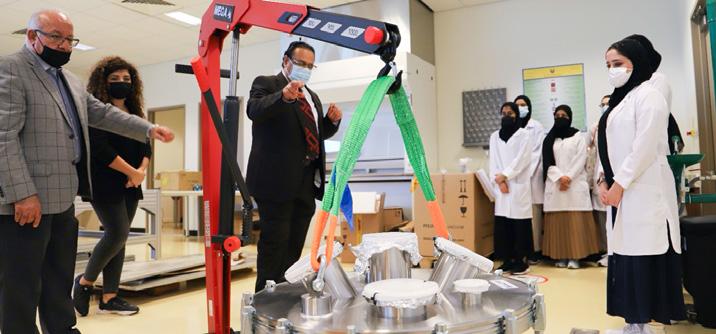
AUS ENGINEERING TEAM WINS ICALT BEST SHORT PAPER AWARD
A team from American University of Sharjah (AUS) won the Best Short Paper Award at the 21st Institute of Electrical and Electronics Engineers (IEEE) International Conference on Advanced Learning Technologies (ICALT) in July.
Titled “Unsupervised Clustering of Skills for an Online Learning Platform,” the paper was co-authored by AUS graduate student in computer engineering Afaf Ahmed, Professor of Computer Science and Engineering Dr. Imran Zualkernan, and Computer Science and Engineering Lab Instructor Hend Elghazaly.
The award-winning paper presented a case study “where assessment data from two online platforms was used to cluster students into similar groups,” with a long-term objective of “incorporating the clustering information into the personalization mechanisms,” according to the paper abstract.
Explaining the scope of the project, Dr. Zualkernan said, “Our paper examines the use of artificial intelligence in understanding the reasons behind the performance of groups of students based on a measurement of their current skills… Typically, student groupings, or banding, are based on gross criteria like average grades. Instead, our paper proposes the concept of keystone questions that can be used in student groupings to better design learning content and practices, and to train educators.”
He hoped their research could one day play a role in improving the learning and teaching practices for both online and offline education at all levels.
Ahmed, who focused on the data analysis section of the work and in helping with the writing of the paper, shared how she felt when she heard the news of the win.
“This award is something that I will cherish and remember throughout my life. Taking part in such a leading conference means a lot to me as I believe it adds great value to my career in academia and research. I am also thankful to my family, friends, and professors for their support,” she said.
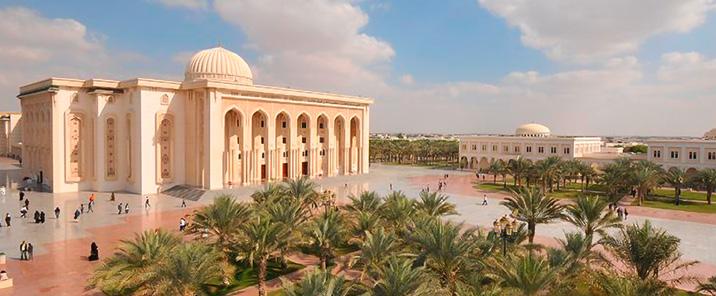
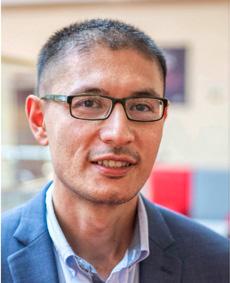
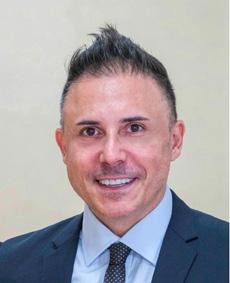
Left to right: Dr. Firuz Kamalov, Dr. David Santandreu Calonge
RESEARCHERS FROM CUD AND AUS LEVERAGE MACHINE LEARNING TO PREVENT ONLINE EXAM FRAUD
Researchers from Canadian University Dubai (CUD) and the American University of Sharjah (AUS) have proposed a novel way of leveraging machine learning to detect cheating in online exams.
CUD Associate Professor of Electrical Engineering Dr. Firuz Kamalov, AUS Professor of Mathematics and Statistics Dr. Hana Sulieman, and CUD Associate Professor and Director of Corporate Training Dr. David Santandreu Calonge jointly authored a paper on their project titled “Machine Learning Based Approach to Exam Cheating Detection” in the highly ranked peer reviewed journal PLOS One.
The paper responds to a significant challenge in online education- preserving the academic integrity of student assessments and preventing academic misconduct. The authors propose a novel approach to detect potential cases of cheating on final examinations using machine learning techniques.
“We use students’ continuous assessment results to identify abnormal scores on the final exam. However, unlike a standard outlier detection task in machine learning, the student assessment data requires us to consider its sequential nature. We address this issue by applying recurrent neural networks together with anomaly detection algorithms. Numerical experiments on a range of datasets show that the proposed method achieves a remarkably high level of accuracy in detecting cases of cheating on the exam,” the researchers state in their paper.
This study lays the groundwork for future educational research into outlier detection techniques, as it proposes a complement to commercial plagiarism detection software and possibly a non-intrusive deterrent alternative to remotely monitored exams.
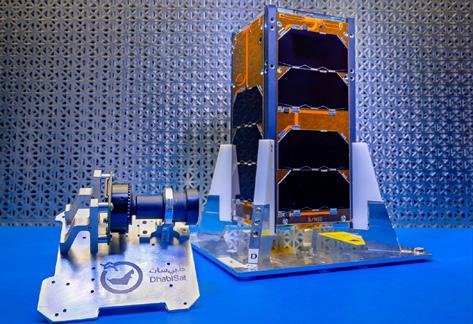
KU STUDENT-BUILT DHABISAT REACHES ORBITAL SLOT
Khalifa University (KU) and Al Yah Satellite Communications Company (Yahsat) have jointly announced the deployment of DhabiSat into orbit from Northrop Grumman’s Cygnus resupply spacecraft. DhabiSat, the second CubeSat designed and built by KU students, eased into its orbit after leaving the International Space Station (ISS). The primary mission of DhabiSat is to enable students to design, implement, and test software modules for attitude determination and control subsystems (ADCS). The work was conducted at the Yahsat Space Lab, which is part of the Khalifa University Space Technology and Innovation Center (KUSTIC).
Khalifa University Executive Vice President Dr. Arif Sultan Al Hammadi said, “With the deployment of DhabiSat into its orbital slot, our students and our partners have once again registered another key milestone for Khalifa University and the UAE.”
Congratulating the team, Yahsat Chief Human Capital Officer Muna Almheiri said, “This is a significant step in the UAE’s mission to develop homegrown talent to lead its National Space Program. We need future generations of Emirati space leaders and visionaries to fulfill the aspirations of our founding fathers, and the rich potential of our nation.”
DhabiSat will assess the accuracy of various ADCS pointing control strategies and validate the same by taking images using a digital camera onboard pointed in specific directions. The new ADCS algorithms will improve the pointing accuracy of the CubeSat and its response time to attitude changes as compared to conventional algorithms. In terms of system resources, DhabiSat will require less power to achieve the targeted pointings and if successful, the algorithms will gain flight heritage on board DhabiSat, which then can be used as a baseline for future CubeSat missions.
KU’S NOVEL DETECTION METHOD LOCATES NEW ARCHAEOLOGICAL SITES AND OBJECTS IN UAE
Researchers from the Khalifa University (KU) Environmental and Geophysical Sciences (ENGEOS) Lab have used satellite remote sensing paired with machine learning and artificial intelligence (AI) to detect buried objects in Dubai’s Saruq AlHadid archaeological site, and to identify new sites.
Researchers use satellite-borne Synthetic Aperture Radar (SAR) at a very high resolution that can detect features the size of one meter that might be buried in the subsurface (less than two meters) under optimum conditions. Based on the machine learning techniques and deep learning analyses conducted during this work, the ENGEOS Lab was able to find potential sites for further on-site investigation. As a next step, the method developed during this first phase of the project will need to be validated through a field survey, which will help improve the accuracy of the results.
Dr. Diana Francis, Senior Lecturer at KU and Head of ENGEOS, said, “Remote sensing has been able to assist archaeological research through several ways in recent years, including detection of subsurface remains, monitoring of archaeological sites and monuments, and archeo-landscape studies. Now, AI and machine learning applied to remote sensing can provide additional support and invaluable guidance for on-site archaeological work.”
The Saruq Al-Hadid archaeological site was selected for the first study by the ENGEOS researchers. Discovered in 2002, Saruq Al-Hadid sits deep in the desert of the southern reaches of Dubai emirate and is believed to have been an iron-age metal ‘factory’ in operation around 1,300-800 BC. Even though relics from the Stone Age (10,000 BC) have also been discovered, the peak period of the site is believed to have been around 3,000 BC. Based on up to 12,000 artifacts found on the site, archaeologists believe it is one of the main centers of copper tool manufacturing in the region since the beginning of the Iron Age (1,000 BC).

STARTAD SELECTS FOUR STUDENT-LED STARTUPS FOR NEXTGEN INCUBATOR AWARDS
Abu Dhabi-based startup accelerator, startAD, announced the winners for its NextGen Incubator. The program is for UAE-based university students aged 1825 who are passionate about developing tech-enabled solutions for global challenges, as outlined in the United Nations Sustainable Development Goals. startAD is powered by Tamkeen and anchored at New York University Abu Dhabi (NYUAD). The NextGen Incubator is organized in partnership with Global Green Growth Institute (GGGI), Ministry of Climate Change and Environment, Sandooq Al Watan, and Etihad Airways.
The winning startups presented outstanding solutions for responsible consumption and production, quality education, climate action, good health, and wellbeing, receiving prizes worth $33,000.
Mental Health AE, a platform that provides services, information, and resources to create awareness and end the stigma surrounding mental health in the UAE, won the $10,000 National Impact Award from Sandooq Al Watan.
Ground Z, an innovative digital platform that aims to reduce educational inequality with the help of artificial intelligence, won a prize of $3,000 from GGGI. 5mm, a startup which creates sustainable microplastic clean up solutions, won a prize of $1,500 from GGGI.
RePlaste, a sustainable design studio addressing waste management, won the Etihad Airways Challenge and return business class tickets to any destination served by the Etihad Greenliner, as well as the opportunity to test and validate their technology through a pilot project on Etihad Airways’ Ecoflights. They also received a prize of $500 from GGGI.
The virtual program received 146 applications from 27 universities. The jury included Etihad Aviation Group Head of Sustainability & Business Excellence Mariam Al-Qubaisi, Sandooq Al Watan Director General Hind Baker, Sandooq Al Watan Senior Strategic Program Manager Sama Alhammadi, and GGGI Senior Officer Hyun S. Lee. The investor panel consisted of The UAE Angels Capital Investment CEO and Cofounder Dr. Abdulhannan Kareem and corporate leader, board director, and advisor to multiple family offices and venture capital companies Alaa Alhashem.


Photo: CERN
UAEU JOINS NYUAD AND UOS AS UAE’S CLUSTER FOR ATLAS COLLABORATION
The United Arab Emirates University (UAEU) has joined the European Organization for Nuclear and Particle Physics Research (CERN) in Switzerland as one of three cluster institutions for the UAE.
UAEU will be joining the University of Sharjah (UoS) and New York University Abu Dhabi (NYUAD) to contribute to the ATLAS Collaboration on behalf of the UAE. The ATLAS Collaboration is one of the leading physics collaborations worldwide. According to CERN, clustered institutions are intended for institutes in nations where the High-Energy Physics community is still growing. Members of a cluster are expected to work closely together and build up a coherent effort in ATLAS with the cluster having one vote in the ATLAS Collaboration Board.
At UAEU, Department of Physics Professor Dr. Salah Nasri is leading the High Energy Physics Group that will be engaged primarily in the Higgs physics models and dark matter research, in addition to modeling and searching for new physics beyond the standard model, and developments toward the High-Luminosity Large Hadron Collider (HL-LHC).
UAEU Acting Provost Prof. Mohammed Hassan Ali Mohammed welcomed this exciting development and expressed his thanks to the three universities for working together to achieve this important milestone and encouraged more scientific collaboration. He expressed his hope that this important research will lead to a better understanding of our universe and to important technological applications that will benefit humanity at large.
ATLAS is a general-purpose particle physics experiment at the Large Hadron Collider (LHC) at CERN in Switzerland. It is designed to exploit the full discovery potential of the LHC, pushing the frontiers of scientific knowledge. ATLAS’ exploration uses precision measurement to push the frontiers of knowledge by seeking answers to fundamental questions of the universe.








